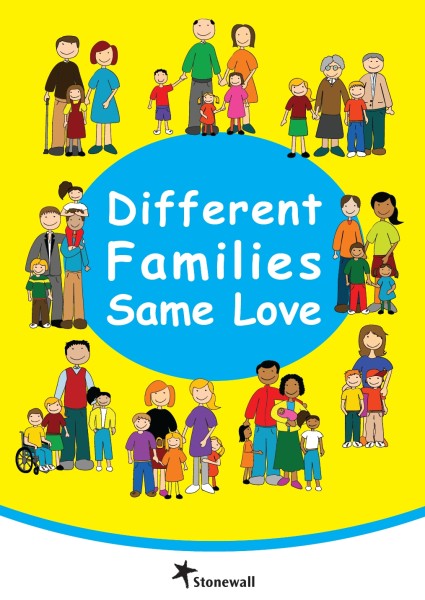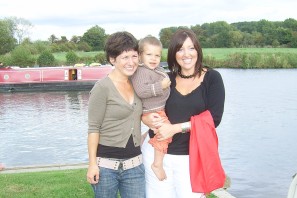Context
Ours is a one-form entry, urban Primary school of 218 pupils; our intake is socially mixed with 30% pupil premium (economically disadvantaged pupils), 22% pupils with English as an additional language and 13% children with special educational needs. We have a strong PSHE (Personal, Social, Health and Economic education) programme and had previously worked on gender stereotyping, but realised we had not done much work on different families. We have a high number of single parent families as well as some same-sex and transgender parents within the school community and were concerned that these families had not been visibly represented at school. Owing to the difficult home situations of many children, staff seem to have avoided talking about different types of families, feeling unsure about having such conversations and knowing what language to use in class when talking about same-sex families. An audit of our picture books in KS1 also showed that there was not enough variation of families visible. Therefore we decided to carry out a whole-school (age 5–11) measuring activity showing children various photographs of families and noting down their comments.
Initial audit
Although pupils knew they all lived with very different sorts of families, this was not openly and positively taught or discussed. We assumed there might be some anxiety or nervousness when discussing diverse families and possibly some negative views. We had talked about homophobic bullying and language but had not celebrated family diversity, including same-sex couples, as a school.
Answers showing what pupils were thinking prior to the family diversity work included:
- That can’t be a family because they haven’t got a mum.
- Families are always the same colour.
- That can’t be a family, they don’t have children.
Activities in-between
Based on the initial audit, we decided to hold a Family Week in Lesbian, Gay, Bisexual and Transgender (LGBT) History Month to launch the family diversity curriculum. The family diversity resources listed in the Equality and Diversity Framework for schools provide activities and lessons suitable for all primary years. We had a whole school staff meeting to talk about family diversity, and used resources from the LGBT rights organisation Stonewall. They have a Primary School Best Practice guide and a Celebrating Difference DVD which looks at approaches other schools had successfully used. Staff were able to ask about appropriate language to use – particularly how to talk about same sex families – and had a chance to look at some family diversity picture books.
 The week started with a school assembly using Todd Parr’s The Family Book – and ideas from the Who do you love? Stonewall lessons. We covered the school in the Different Families, Same love and Real Families Rock posters. We used the Stonewall Different Families, same love sum posters in class to make our own family sums to display.
The week started with a school assembly using Todd Parr’s The Family Book – and ideas from the Who do you love? Stonewall lessons. We covered the school in the Different Families, Same love and Real Families Rock posters. We used the Stonewall Different Families, same love sum posters in class to make our own family sums to display.
Each class looked at how families have been represented in art, such as Keith Haring and Andy Warhol prints and various sculptures depicting families. We then chose our favourite types of art/artists and made representations of our own family – parents and carers were invited to come in to school to make the artworks with their children. There was a whole school assembly at the end of the week to share the artwork and to celebrate the diverse family groupings in our school community. The artwork and books were on display in the main school lobby.
Different Families, Same Love (Stonewall)
Final audit – Reflection on whole process
The final audit showed certain changes in the pupils´ attitudes. This was evident from the comments on family issues and responses to the questions Who is a family? What does it stand for?
- Me and my mum are my family.
- Family is people who have died too.
- I didn’t know you could have two mums or two dads.
- I like it that I have two families and two homes.
- You can still be a family even if you don’t live in the same house.
We had children who did not have any information about one of their parents talk about this with staff members, who were then able to start a dialogue with their parent. We had lots of interest and positive comments from many parents and carers about the display, and an Ofsted inspector was also impressed by the visibility of our family diversity work.
Although there was some fear from staff that some parents might object to discussion of same-sex families, we had no negative responses at all. Staff confidence to teach about diverse families was raised and they felt more comfortable to talk about same-sex relationships, and therefore also to tackle any homophobic behaviour or name-calling.
The following year we had another whole-school assembly in LGBT History Month, this time with a focus on the changes over time, and the law allowing same-sex marriages. The family diversity lessons are now embedded in our PSHE framework in every other year group.
Most children were really proud to share details about their families and the visible representations meant they could quickly see the wide variety of families within each class. Because of their personal circumstances (such as absent family members or adoptive families), there were some children who found the focus on families very difficult. In retrospect, I would have asked staff to think of key children who might have needed additional support from learning mentors, or possibly to have arranged to do the activities in a small group rather than whole class for these children.
Links:


